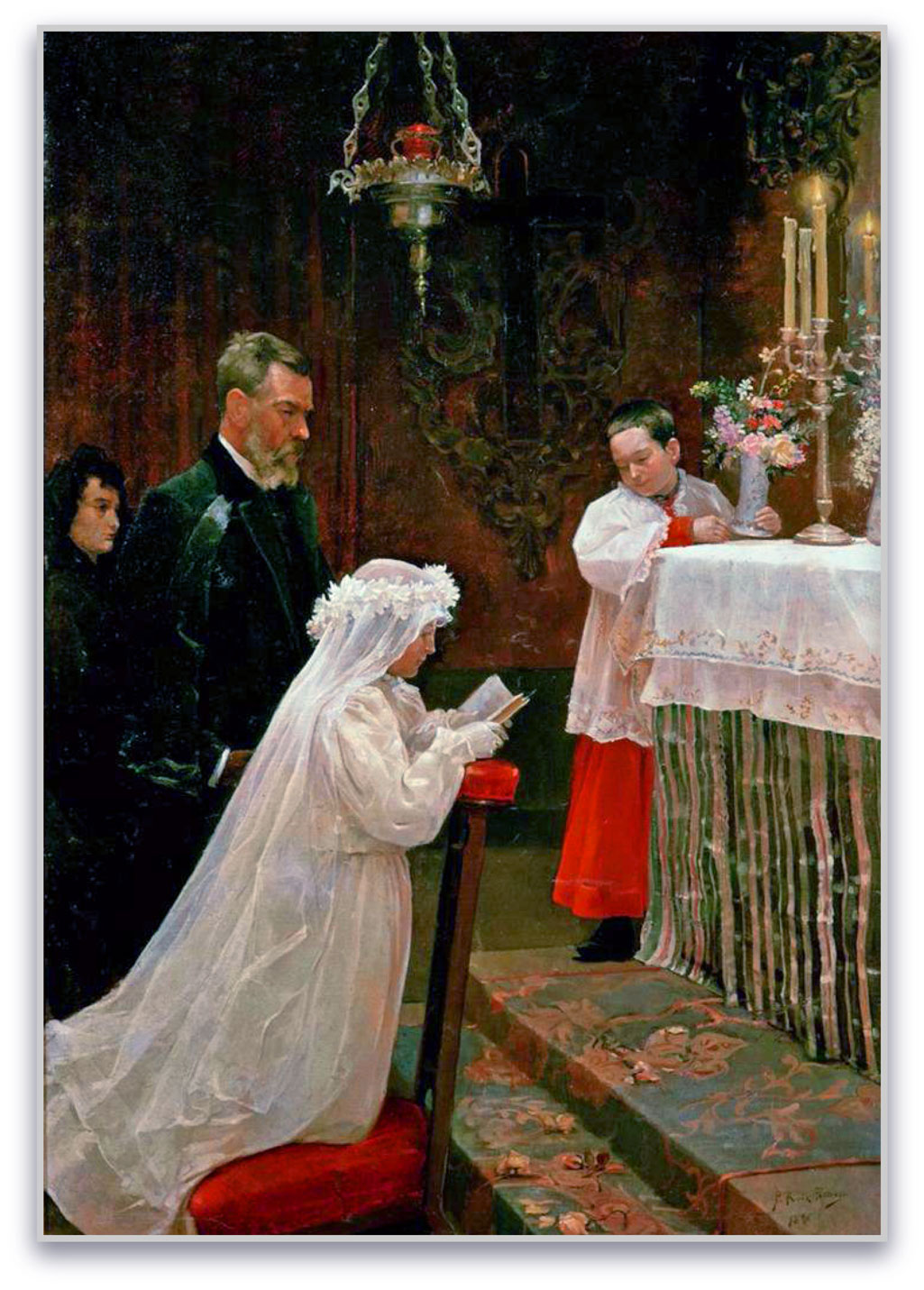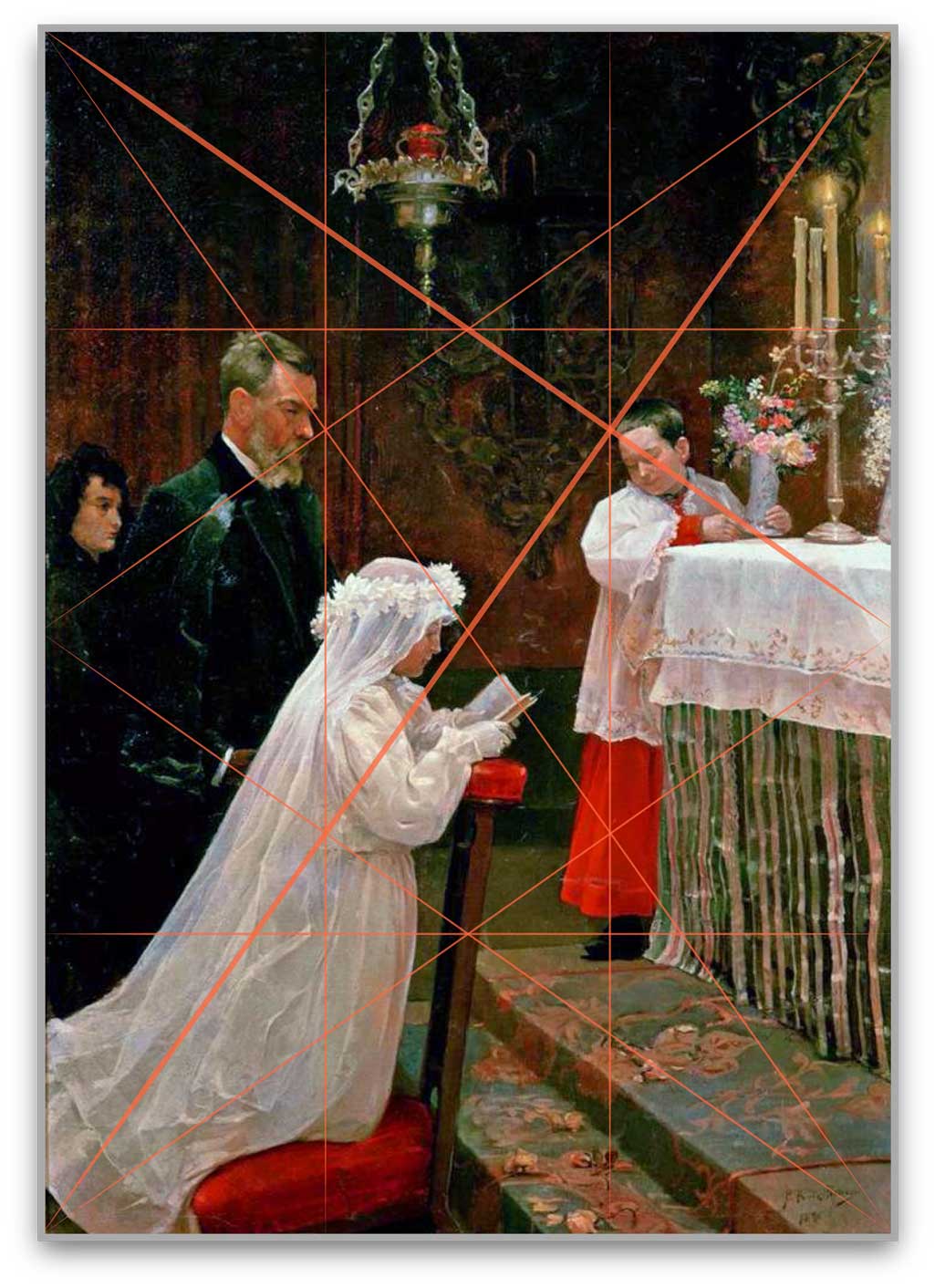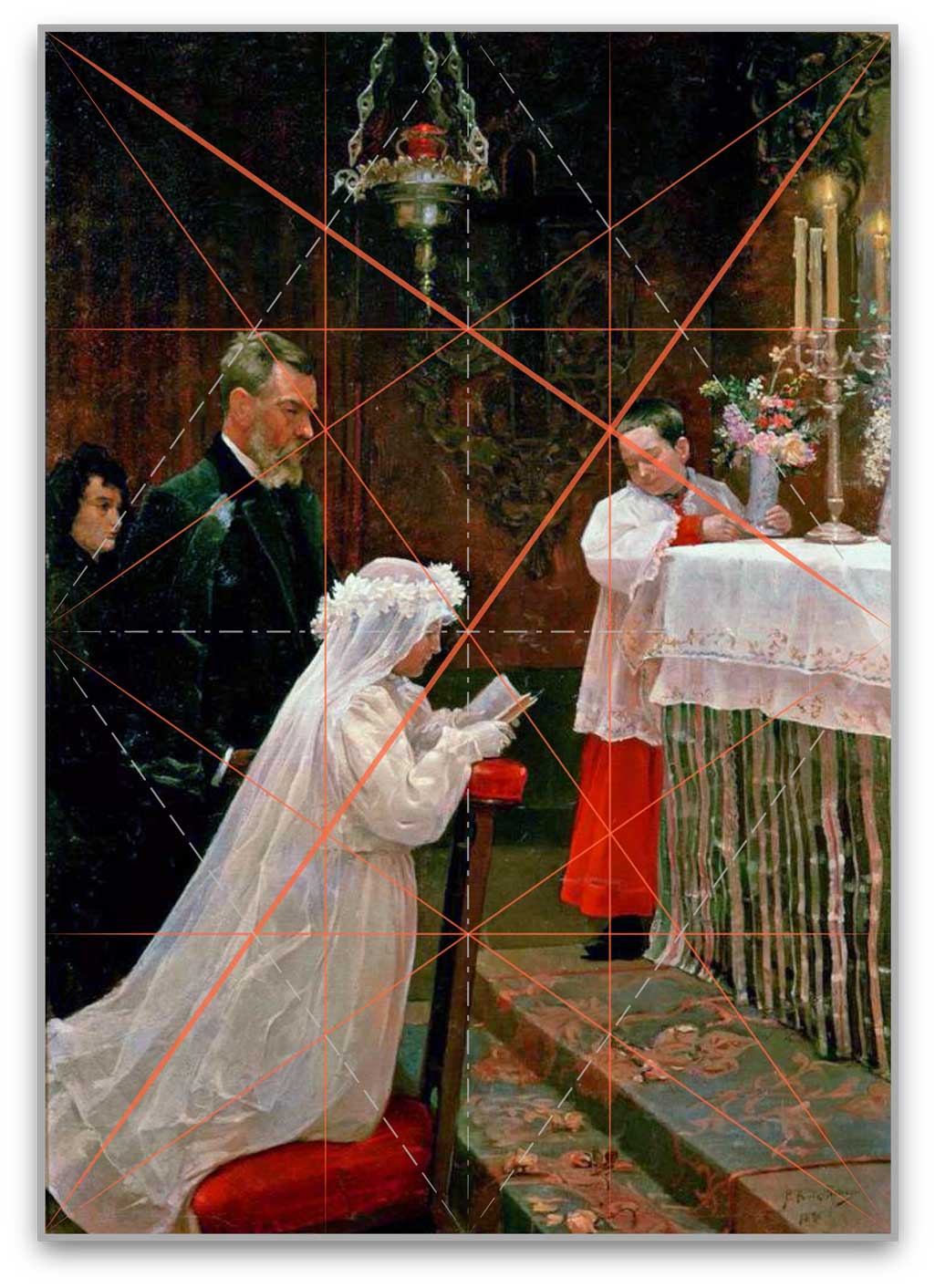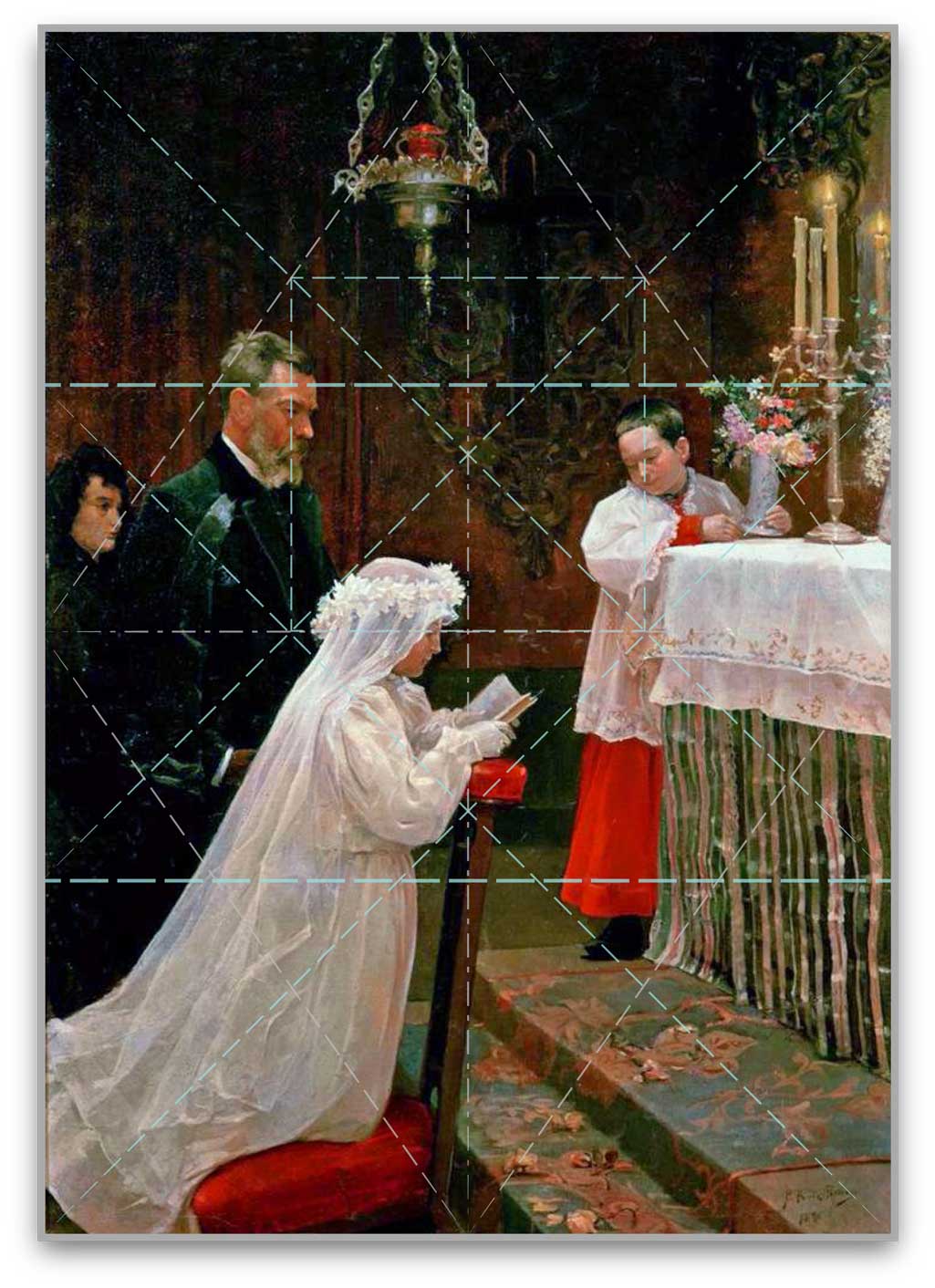
Pablo Picasso painted ‘First Communion’ in 1896. He was around 15 years old at the time. It’s a large painting at 65.4” high by 46.5” wide (166 x 118 cm).
65.4 divided by 46.5 equals 1.41
√2 = 1.414…
‘First Communion’ is built on a √2 armature…

In Plate 1 we can see that the principal figures all fall on intersections of the Primary Diagonals and Riciprocals.

In Plate 2 we see that the rectangle divides evenly into halves making it a √2 rectangle.

In Plate 3 we see that the principal figures are also organized around the Rabated Squares. We will look at this in more detail soon…

In Plate 4 we can see that the vanishing point for the Linear Perspective is at the centerline on the left. Except for that pesky altar top which is placed higher so that we can see the top of the altar. Is this a harbinger of Cubism or artistic license?

Plate 5 shows all the structure together. Here we can see that a very young Picasso is not simply painting what he sees. He is building for effect.
There is an ongoing debate about this kind of analysis in art…
“We all know that Art is not truth. Art is a lie that makes us realize truth at least the truth that is given us to understand. The artist must know the manner whereby to convince others of the truthfulness of his lies.” – Pablo Picasso

https://waterfallmagazine.com
You really make it seem so easy with your presentation but I find this matter to be actually something that I think I would never understand.
It seems too complex and very broad for me.
I’m looking forward for your next post, I will try
to get the hang of it!
Yes, the goal here is to present the information as clearly as possible. And yes, that does not always make it easy to use. As with most other skills, the more time you spend mastering the process and tools the more transparent their use becomes in the finished product. Thank you for taking the time.
There’s no evidence Picasso planned or drew any of those lines in his underdrawings.
If you have forensic evidence or preparatory drawings I’d love to see it/them. I mean that sincerely.
Is there evidence that he employed Linear Perspective? Is there evidence of the Vanishing Point for the stairs at the center left edge? Is there evidence for the Vanishing Point for the carpet and chair at the lower left corner? Is there evidence that the proportions of the canvas 118cm x 166cm equal an aspect ratio of 1:1.41?
There is Xray evidence of his alterations to Science & Charity. The changes align with the dynamic symmetry of the √ϕ aspect ratio of the painting. I’ve diagrammed this painting as well and will post it in the future.
Also, I use this tool without doing underdrawings. I use string and long push pins to float the lines above the surface. I also use transparencies with the armatures printed on them. I’m not suggesting he did this but it’s not unreasonable and frankly a time saver to have a piece of glass with the armature drawn on it.
Thank you for commenting.
No you mean it facetiously. Of course he/she doesn’t have forensic evidence.
You are right of course. Picasso was aware and availed himself of these techniques. But you shouldn’t be so pretentious. The commenter probably wasn’t aware that a painting such as this relies on a classical understanding of the medium.
Also he/she “politely disagreed.” Why so defensive? Anyway, it’s Picasso’s art, not yours (which I’m certain is fine indeed).
It’s a sincere request. Any evidence is welcome whether it proves or disproves what is offered here.